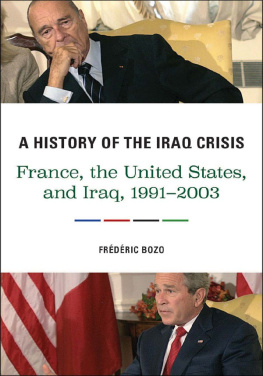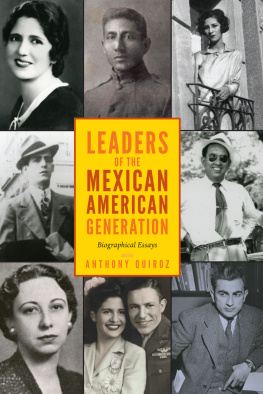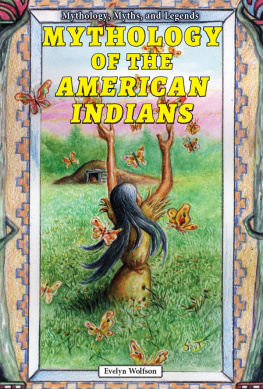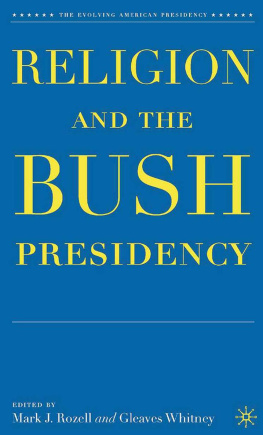Holy
War
Cowboys, Indians, and 9/11s
Mark Cronlund Anderson
2016 Mark Cronlund Anderson
All rights reserved. No part of this work covered by the copyrights hereon may be reproduced or used in any form or by any means graphic, electronic, or mechanical without the prior written permission of the publisher. Any request for photocopying, recording, taping or placement in information storage and retrieval systems of any sort shall be directed in writing to Access Copyright.
Printed and bound in Canada at Friesens
Cover design: Duncan Campbell, University of Regina Press
Text design: John van der Woude Designs
Copy editor: Dallas Harrison
Index: Patricia Furdek
Proofreader: Kristine Douaud
Cover art: Army action figures by Kitch /Veer
Library and Archives Canada Cataloguing in Publication
Anderson, Mark Cronlund, -, author Holy war : cowboys, Indians, and s / Mark Cronlund Anderson.
Includes bibliographical references and index. Issued in print and electronic formats. isbn -- 88977 -- (paperback). isbn -- 88977 -- (html). isbn -- 88977 -- (pdf)
. Mass media and warUnited StatesHistory.. War and societyUnited StatesHistory.. ImperialismHistory.. Popular cultureUnited StatesHistory.. Indians in popular cultureUnited StatesHistory.. WarReligious aspectsHistory.. September Terrorist Attacks, 2001 . i . Title.
p . w u .' 60973 c 2016 - 900752 - c 2016 - 900753 -
We acknowledge the support of the Canada Council for the Arts for our publishing program. We acknowledge the financial support of the Government of Canada. / Nous reconnaissons lappui financier du gouvernement du Canada. This publication was made possible through Creative Saskatchewans Creative Industries Production Grant Program.
Contents
Acknowledgements
Adapted sections of Chapter and Chapter first appeared in The U.S. Frontier Myth, American Identity, and /, Journal of Psychohistory , ( 2011 ): , and Intercultural Communication, the American Frontier Myth, and Several -s, in From Here to Diversity: Globalization and Intercultural Dialogues , ed. Clara Sarmento (Newcastle upon Tyne: Cambridge Scholars Publishing, 2010 ), . Sections of Chapter previously appeared in The Mythical Frontier, the Mexican Revolution, and the Press: An Imperial Subplot, Canadian Review of American Studies , ( 2007 ): .
Many thanks to my terrific research assistants for their invaluable help Jessica Brown, Melissa Lalonde, Aaron Muir, Melissa Munro, and Anna Weber. I am also grateful for grant support from the Social Sciences and Humanities Research Council of Canada and the Presidents Research Fund at Luther College, University of Regina. Big thanks also to Duncan Campbell, Karen Clark, Donna Grant, and Bruce Walsh at the University of Regina Press. Finally, and most importantly, my family has endured a lot of shenanigans as well as inspired my best efforts, such as they are. Thanks and much love to Madelaine, Dagmar, and Carmen. It is no exaggeration to say that I would be fairly lost without them.
Chapter 1
Introduction: A Mission from God
Long ago he formed an ideal conception of omnipotence and omniscience which he embodied in his gods. Whatever seemed unattainable to his desires or forbidden to him he attributed to these gods. One may say, therefore, that these gods were the ideals of his culture.
Sigmund Freud
I am persuaded no constitution was ever before as well crafted as ours for extensive empire.
Thomas Jefferson
N oam Chomsky and George W. Bush seldom find reason to agree, but they both argued that / stood alone in United States history. Nothing like it had happened before, they said. And to be sure, nobody had earlier crashed planes into the World Trade Center towers. That was new. Both men, deeply committed and well-intentioned ideologues, heroes to their adoring fans, stressed the point. For the first time, the guns have been trained the other way, Chomsky said as a part of a series of interviews that were published as a book. He noted emphatically that the continental United States had not been attacked directly on its home turf since the War of 1812 .
Both men also agreed that the United States had been attacked by savages. In his nationally televised address to the nation on September , 2001 , Bush noted, thousands of lives [were] ended by evil, despicable acts of terror.[T]oday our nation saw evil, the very worst of human nature. It is hard to argue with such sentiments.
Yet it lies precisely here that Bush and Chomsky neglected something intrinsic to / because once the United States launched the two ill-fated wars in Afghanistan and Iraq the story no longer seems unique. The reason is simple. The / event and the response to it, collectively the / story, are as old as the nation that was born fighting Native Americans. In other words, considered as simulacra, as mythopoesis, such /-like stories have played out again and again in American history. If you consider the / story from the way the news media cast it, war.
And so / was not, and is not, new. Instead, it spins a primal American yarn dating to the earliest days of settlement in the seventeenth century. It is Americas own creation story. In its initial expression, it found Americans or, more accurately, proto-Americans forced to defend themselves against perceived Indian savagery. Early on such sentiments became well established in American popular culture in the form of captivity narratives, which focused imaginatively on the kidnapping of white females by red savages and the heroic manner in which the white women resisted their captors and were predictably redeemed by heroic white males. In its infancy, the myth operated on a series of simple binaries. For example, the white Protestant settlers who laid the groundwork for inchoate American core culture were goodness itself, chosen by God, virtuous, decent, abstemious, hard-working, whereas the Indians were bad, Satans minions, barbaric, out of control, profligate, and lazy. Interpretation of scripture not merely shaped this construction but breathed life into it. In todays parlance, we might call those Indians terrorists, but initially, and then especially in the centuries that followed (because the Indian wars lasted with few interruptions for nearly years), we have come to know them better as the Sioux, Pawnee, Apache, and so on. In particular, for more than a century, Hollywood westerns have served up a smorgasbord of Indians cast as veritable monsters.
The early Indian wars set the stage and provided a kind of necessary cohesive impetus for early settlement and subsequent expansion across the continent generation by generation. It is difficult to overstress the importance of the early conflicts because they established a cultural framework, a community, an emerging nation, in which America organically embraced its self-sense of divine mission, better known to us nowadays as American exceptionalism. One consequence of the long Indian wars is that those proleptical Indian savages became archetypal. One outcome is that, as portrayed in popular culture, Mexicans, Nicaraguan revolutionary Augusto Sandino, Saddam Hussein, former Panamanian leader Manuel Noriega, and so many Central Americans, Vietcong, conflated Arabs/Muslims, and countless other Others have subsequently played the role of Indian stand-in(s) in later American conflicts that popular culture presented as structural, spiritual, and emotional heirs of the early Indian wars. Mythical, in other words. These are the subject of this book.











